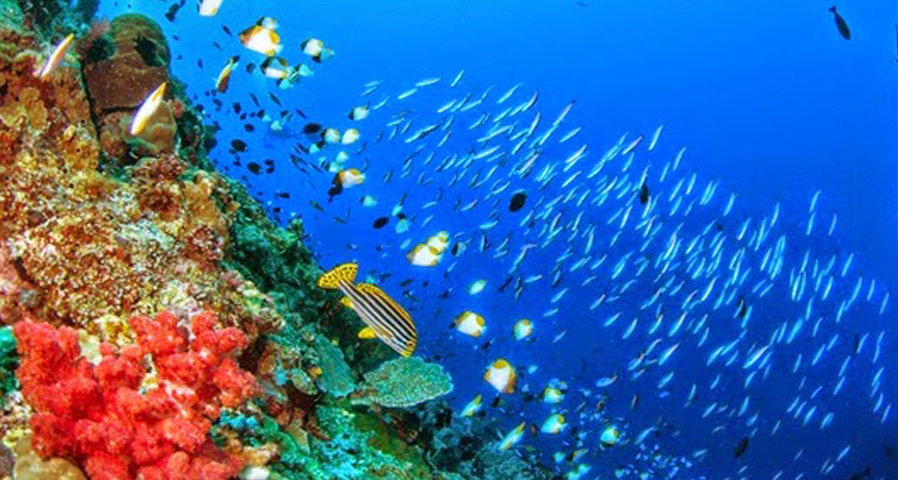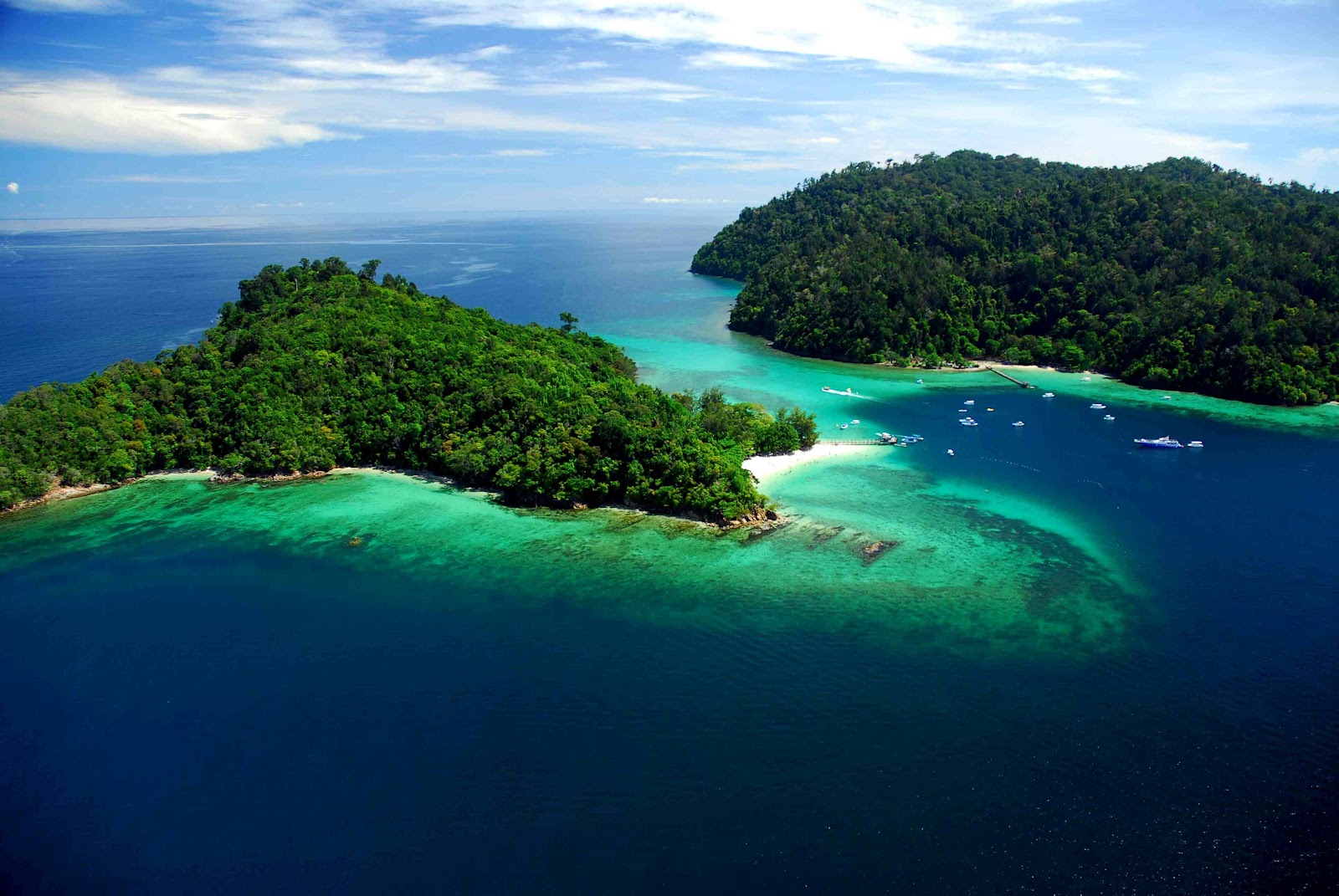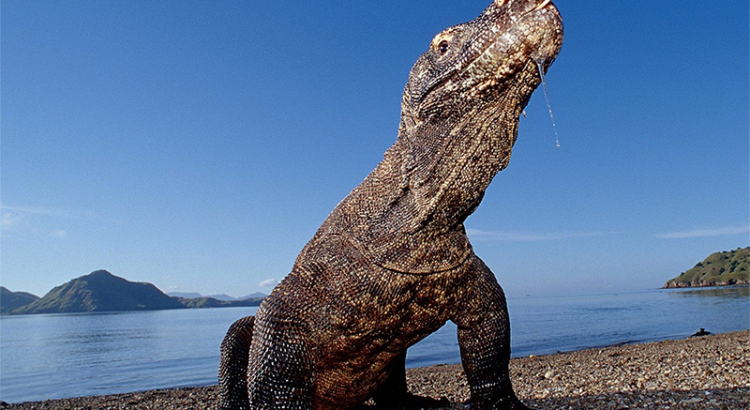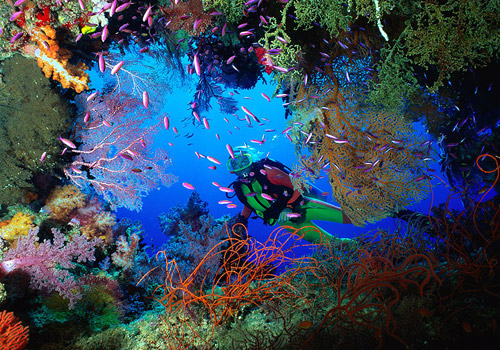Bunaken is one of those exceptional patches on the planet that seems as if it was tailor-made for scuba-diving. A small island just off the coast of Sulawesi, in the Indonesian archipelago, divers from all four corners of the planet flock here throughout the year to indulge in its underwater treasures. Just what is it that makes it so spectacular?
The Marine Park – Established in 1991, the 75, 265-hectare Bunaken Manado Tua Marine National Park helps to enhance and promote Bunaken’s unique environment. A migratory route for protected animals and recognised for its economic value for fisheries and tourism, a management plan was initiated in 1994 to achieve the park’s objectives of educating the public; carrying our scientific research; coordinating government and NGO activities; and enforcing rules within the protected area – heavy fines face anyone who breaches these. All visitors, including divers, pay an entrance fee, and proceeds helping to fund conservation programmes such as village improvement programs, waste collection and reef rehabilitation.
Supreme diving conditions – Expect 35-40 metres of visibility, 29 C waters, an abundance of diverse dive sites and a breadth of dive operators and accommodation options to choose from, which range from simple beach-hut set-ups to luxurious dive outfits.
Biodiversity – Oceanic currents are responsible for Bunaken’s mind-blowing marine-life. There are over 300 types of coral and 3000 species of fish here, including seven of the world’s eight species of giant clams. The abundance of hard corals are crucial in maintaining diversity in the park and, on a typical dive, you can expect to be bombarded with the likes of Napoleon wrasse, giant turtles, bumphead parrotfish, barracuda, jacks, triggerfish, rays, puffers, filefish, sweetlips, and snappers, to name but a few.
Endangered species – Bunaken’s protected waters are a safe-haven for rare and endangered animals, such as coelacanths, dugongs, and protected species of whales, dolphins and turtles.
Little Critters – A few minutes’ boat-ride from the coast of Bunaken is the Lembeh Strait – a.k.a. the critter capital of the world. The black sands of this shallow body of water separate Lembeh Island from North Sulawesi, and are a haven for muck divers. Quite possibly the best place on the planet for macro photography, you can expect to see an abundance of bizarre creatures, such as inimicus devilfish, dwarf lionfish, pegasus sea moths, frogfish, nudibranchs and flying gunnards.
The Coral Triangle – Covering 5.7 million square kilometres of ocean waters, the Coral Triangle is recognized as the international centre of marine biodiversity and a global priority for conservation – and Bunaken sits slap bang in the centre of it. The ‘Amazon of the seas’ is home to the highest diversity of coral reef fish in the world (many of which are endemic) and the biggest variety of corals on the planet, with 76% of the world’s species found here.
Accessibility – Sulawesi’s second city, Manado, is a 20-minute boat-ride away from Bunaken Island. Manado’s international airport connects with the rest of Asia and forms the gateway to Bunaken for international tourists, who can find themselves down with the fishes just a few hours after passing through customs. Proximity to the mainland also means that food-supplies, beer-stocks and other amenities are easily to hand.
Sounds like heaven. There’s got to be a drawback? – Bunaken has a reputation for receiving drifting rubbish from Manado but, far from the mounds of debris that many people imagine, it’s more like the odd floating bottle or plastic bag – often mistaken for jelly-fish by divers. Clean-ups and education are helping to reduce the problem, with fees from the National Park funding the operation.
Tags: Red Sea Liveaboards, Red Sea Live Aboards, Maldives Liveaboards, Maldives Live Aboards, Red Sea Diving, Maldives Diving, Egypt Diving, Egypt Dive



